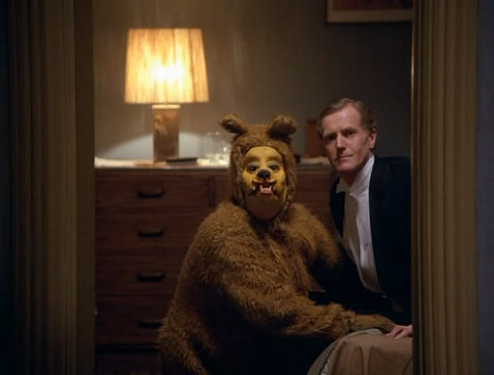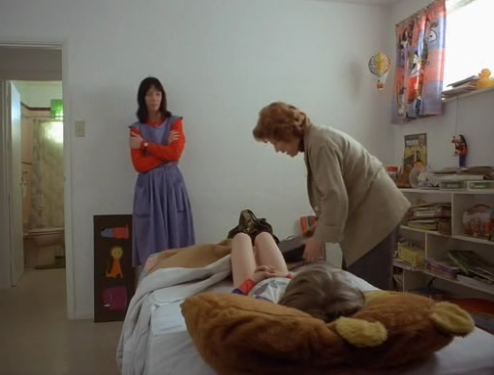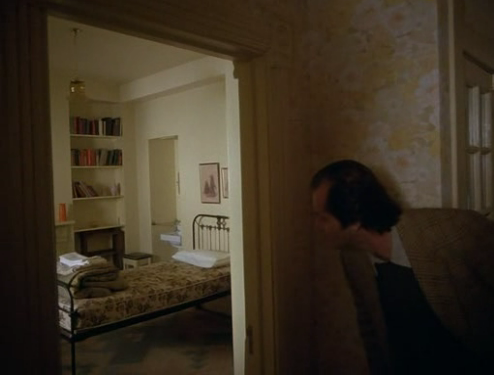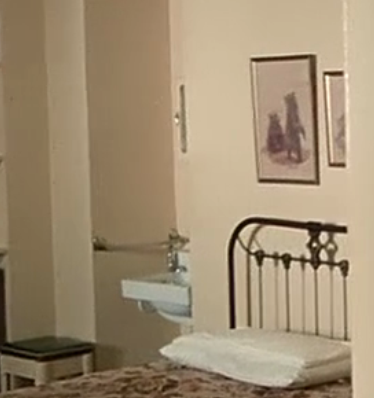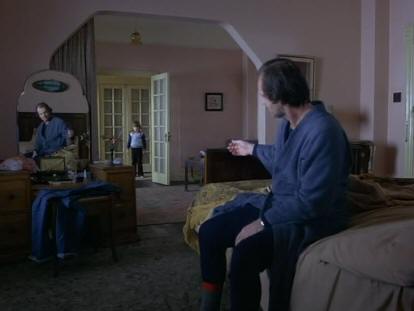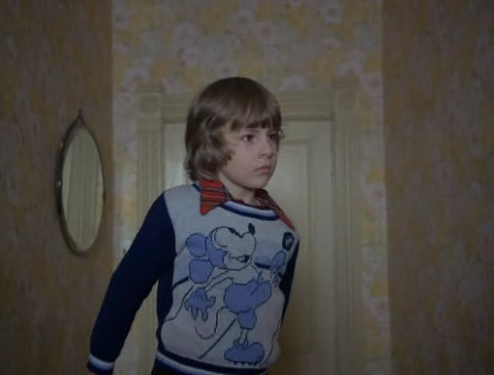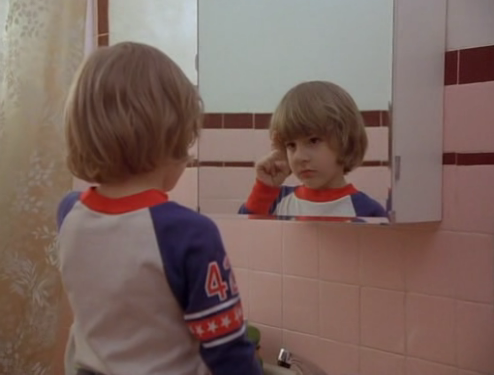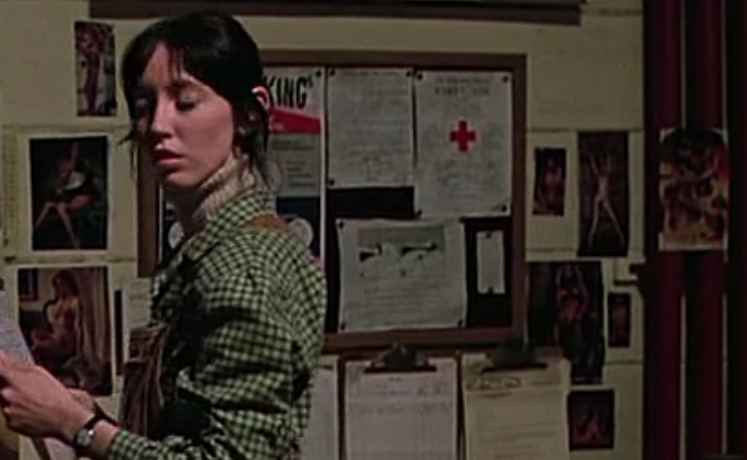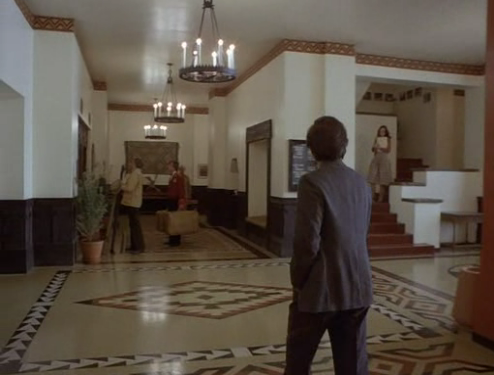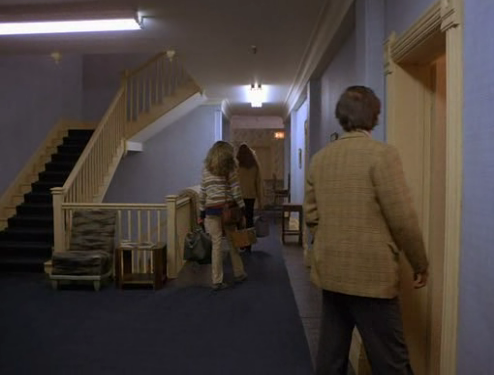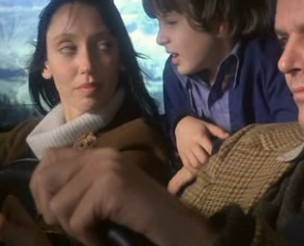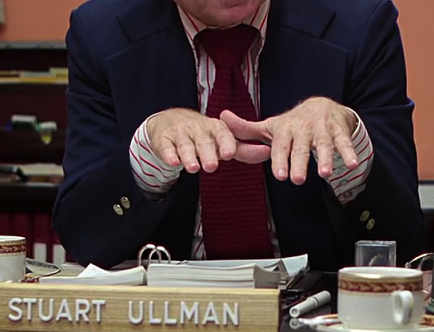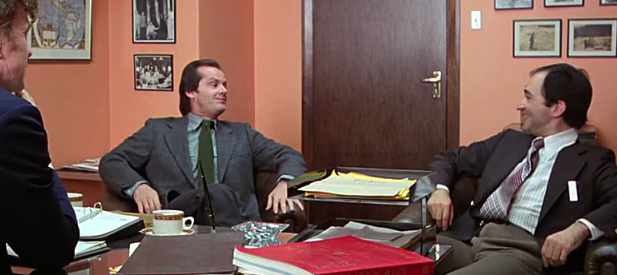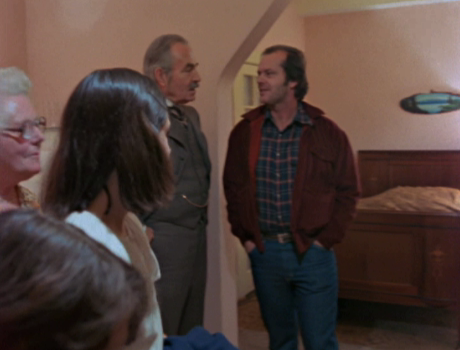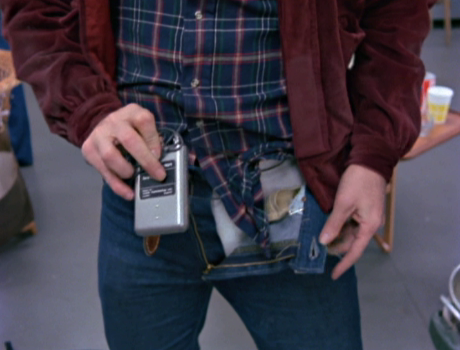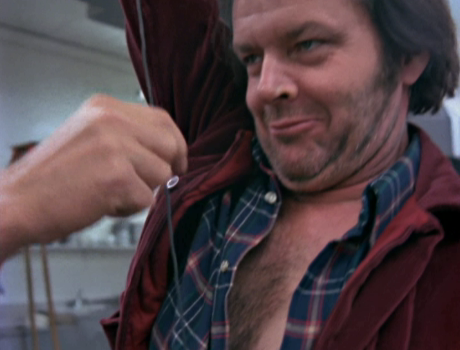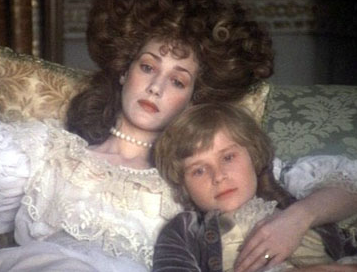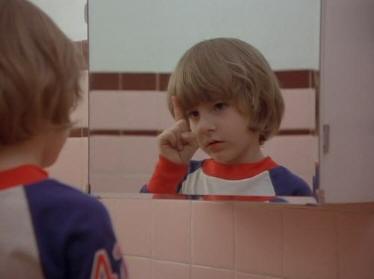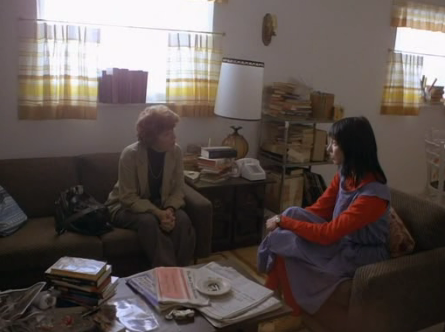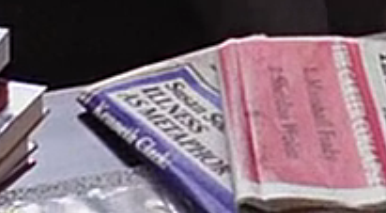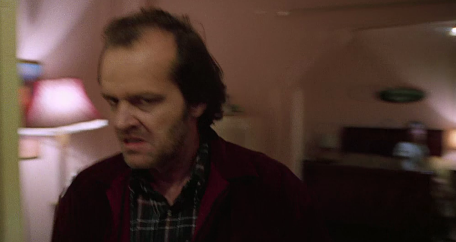CHAPTER SIXTEEN
The following video is based upon chapters 16 & 17 of this analysis, though both the video and article equivalents
One of the most frequent questions I’ve received about The Shining is “What does the guy in the bear costume mean?” The popular interpretation is that the scene is a throwback to a subplot of Stephen King’s book, in which a party guest in a dog costume has a homosexual relationship with one of the hotel’s former owners. For a detailed description of this subplot follow this link. The first thing to note is that in the film the guy is dressed in a bear costume instead of a dog costume.
A shift from dog to bear costume doesn’t have any significant effect on the aesthetic scariness of the scene so there must have been some sort of logic at work in Kubrick’s decision. The second obvious factor is that Kubrick has omitted the entire back story associated to the dog costumed man in the book, leaving his audience at a complete loss as to the scene’s meaning. In researching the film I have found three thematic interpretations of the bear man scene and I believe Kubrick intended all three of these metaphors as part of the subliminal narrative. This chapter will cover the first of those themes. There are actually several other references in the film to bears. The easiest one to notice is in the scene of Danny talking to the psychiatrist. In the close up of Danny we see that his pillow has a teddy bear face on it. Look carefully at this teddy pillow. Its eyes are similar in design to the floor dials of the gaping mouth elevator, which we’ve already identified as symbolic eyes, and the teddy’s mouth is bright red, which again is similar to the gaping mouth doors of the elevator.
Another connection is that both of these bear motifs are featured in relation to beds or bedrooms. Now I won’t beat around the bush by building up to my interpretation of this theme. Some readers will probably disapprove or take offence at what I’m about to say regardless of how I explain it, so I’ll just say it outright. Danny has been sexually abused by Jack. Here is a piece of evidence which on its own acts as virtual confirmation of this theme. When Ullman and Bill Watson approach Jack in the lobby on Closing Day, Jack is reading a January 1978 issue of Playgirl Magazine.
First of all there’s the obvious homosexual innuendo, but the story titles featured on this particular issue include the following: INTERVIEW: THE SELLING OF (STARSKY & HUTCH’S) DAVID SOUL INCEST: Why parents sleep with their children. HOW TO AVOID A DEAD END AFFAIR. Of course the caption relating to incest is the one that’s relevant to this chapter, while the Starsky & Hutch caption may be a reference to Jack giving his soul for a drink and the affair caption could be related to Jack’s encounter with the woman in room 237. Notice how Ullman even points his finger at the magazine as if informing us of its significance. Returning to the comparisons between the bear costumed man scene and Danny talking to the psychiatrist, sexuality is subtly referenced in both scenes. The bear man appears to be giving felatio to the man on the bed, just as the dog man in the book was carrying out a sexual submission role with his partner. The open patch on the bear man’s behind in the film simply adds to the sexual emphasis.
In the psychiatrist scene Danny lays on the bed with his jeans removed and his hands curiously covering his groin area, just as Jack did in the fatherly love scene.
The dialogue of the scene is full of innuendos about abuse. Danny: "Tony is a little boy that lives in my mouth." Doctor: "If you were to open your mouth could I see Tony?" Danny: "No." Doctor: "Why not?" Danny: "Because he hides." Doctor: "Where does he go?" Danny: "To my stomach." Doctor: "Does Tony ever ask you to do things?" Danny: "I don’t wanna talk about Tony any more." Another bear reference is found in Danny’s bedroom at the Overlook. Ullman shows the Torrance’s their apartment and Jack, not Wendy, steps forward and peaks into the child’s room. Directly above Danny’s bed is a framed picture of two bears, one standing and one sitting.
The bears are only discernible in the HD version. Of all the places in the film that a picture of bears could appear this one is right above Danny’s bed and there are no other framed bear pictures in the film. It’s also possible that the framing of the bear picture is a parallel of the felatio bear being seen within a door frame. And the parallels continue. Our partial view of the felatio bear, before he leans back from the bed, matches our partial view of Danny brushing his teeth before his first Shining vision.
Is this implying that Jack forced his son to perform felatio in the fatherly love scene? This concept is further paralleled in our first view of Danny’s bedroom in the Overlook. Next to the bed is a mirror above a sink and in front of the sink is a stool for the child to stand on, just as he was stood on a stool when brushing his teeth.
We identified in previous chapters that Jack strangled Danny in the fatherly love scene and with these new details it would seem that he also sexually abused his son during this event. Jack’s manifestation as a rotten, naked old woman in the room 237 dream sequence parallels the horrific physical disgust Danny would have felt during his nightmarish ordeal. It’s now even more clear why Kubrick chose such a sombre piece of music for the fatherly love scene. Here’s another parallel. Danny (manifested as his own father in room 237) embraces the naked woman and sees the horror of his predicament in a mirror. Jack embraced Danny on the bed in the fatherly love scene, from which Danny would have also been able to see his own predicament in a mirror. This is the same mirror in which Wendy hugs Danny before seeing the REDRUM graffiti on the bathroom door. Not only that, but Wendy is wearing Jack’s blue robe. There are lots of parallels going on here.
There is also an odd Mickey Mouse parallel. Mickey and Minnie Mouse stickers are shown on Danny’s bedroom door as he brushes his teeth and in the fatherly love scene he wears a Mickey Mouse sweater.
Many people have asked me about the significance of the number 42 on Danny’s T-shirt in the tooth brushing / shining scene.
I don’t go for number interpretations generally, but here I’ll make an exception. In the lobby Danny and Wendy watch a film called Summer of ’42, which is about a young man who has an affair with an older woman.
This is right before the fatherly love scene. The number 42 was shown on Danny’s shirt as a parallel with the sexual relationship content of the film Summer of ‘42, and Danny is wearing it in the early summer scenes of the film. The particular scene from Summer of ’42 that we see on the lobby television shows the older woman telling the young man to sit down while she makes lunch for him. Wendy parallels this in her last line of dialogue to Danny as he runs to get his fire engine: “Make sure you come right back 'cause I’m gonna make lunch soon”. The film within a film parallel is also hinted at by the television content initially filling up our entire view of the scene before zooming out to reveal Danny and Wendy in the lobby. The complete lack of wires running to the TV, pointed out by of my correspondents, may also be related to the concept of a fractal film. These observations could easily be interpreted as evidence that Wendy has also had an incestuous relationship with Danny, but my guess is the “older woman” relationship refers to the woman in room 237, who we know is simply a dream manifestation of Jack. There seems to be many hints in the film that Wendy is aware of her son’s abuse and is covering up and denying the issue. Her gullible belief of Danny’s room 237 story is plain silly. When the psychiatrist asks Danny “Who's Tony” Wendy, stood defensively with her arms folded, quickly interjects, “Tony’s his imaginary friend”, as if trying to gloss over the issue. Her relationship with Jack seems to be totally lacking in intimacy. Add to that the fact that he reads Playgirl magazine. And another strange aspect is that there are lots of pornographic pictures of women on the billboard in the basement (see HD version of the film).
How did these pictures get there if Wendy does all the menial chores. Is she a lesbian? Did Jack put them there? Some details supporting the latter is that Jack leers at other women several times in the film. There’s the woman in room 237 obviously, but there’s also a woman walking down a flight of stairs in the lobby who he briefly stares at and there’s the two women who say goodbye to Ullman outside the Torrance apartment – Jack is last to enter the apartment and sneaks a sly peak at them.
Another important detail is that Jack doesn’t wear a wedding ring at all in the film, not even when he and his family are driving to the hotel, but Wendy always wears hers. Hasn’t she ever challenged him on this?
He doesn’t want to spend any time with her, he refuses to take her for a walk after breakfast, he bars her from entering the Colorado Lounge where he hangs out and he stays up all night while she's in bed and sleeps alone in the day. It’s not much of a marriage. On the subject of wedding rings, a consistent detail is that none of the males in the film wear one. Jack, Ullman, Bill Watson, Lloyd the bartender – not one wedding ring, and Grady’s hands are gloved so we can’t see whether he is wearing a ring or not. It seems that commitment to family is a problem for all of these males.
The sexual abuse theme is even communicated in the “making of” documentary. Kubrick was renowned for not allowing visitors during a shoot, but in the documentary we see James Mason and his family visiting the Torrance apartment set. Vivian Kubrick explains in the commentary that James Mason was acting in a local theatre, and so Kubrick gave him an invitation. In particular, we see Jack Nicholson and James Mason having a personal chat, while the rest of Mason’s family meet Kubrick himself.
Why did Kubrick break his code of on-set secrecy and why did he show this meeting in the documentary? It’s actually quite simple. He was creating a parallel between Jack Torrance and the main character of Kubrick’s earlier film Lolita. In Lolita, Mason played Humbert Humbert, a man who has a sexual relationship with his underage stepdaughter. Sound familiar? Let’s compare the two characters in more detail. Both Jack and Humbert are writers. Both of them keep their personal writings hidden from their wives. Both of them secretly despise their wives. And both of them have sexual relations with a minor within their own family unit. Elsewhere in the documentary there is an emphasis on sexual behaviour from Jack. He tells Kubrick’s daughter Vivian, “You look cute in your red shirt”, a soft porn calendar is seen on his bathroom door, he is seen unzipping his pants to pull out a tape recorder and he provocatively unbuttons his shirt to pull out the connecting wires. Kubrick didn’t just show us random footage from the set. He chose each clip for thematic reasons.
As well as the incest parallels with the film Lolita, The Shining also carries abuse parallels with another Kubrick film called Barry Lyndon. In Barry Lyndon a commoner, who marries his way into high society, systematically beats his stepson, Lord Bullingdon. Bullingdon bares a striking resemblance to Danny Torrance.
Later in the film, the adult Bullingdon is played by Leon Vitali. Vitali became a close career-long collaborator of Kubrick’s and on the set of The Shining he was assigned to work closely with the young actor Danny Lloyd (there are several parallels in The Shining between actor’s first names and the first name’s of character’s – two Jack’s, two Danny’s and two Lloyd’s). We see this relationship between Vitali and Danny when shooting the scene of Danny looking for a hiding space. This parallels the big brotherly relationship in Barry Lyndon between the adult Lord Bullingdon and his younger half brother, who is also a Danny Torrance look-alike. In the HD version, several book and newspaper titles are visible in the psychiatrist scene. One newspaper article is called “Illness as metaphor” and was written by Susan Sontag.
This was a controversial essay claiming that the medical professions have a tendency to mistakenly label physical health conditions as manifestations of psychological problems. It’s more than likely that Kubrick placed this article title in the scene to communicate that the psychiatrist’s dismissal of Danny’s health problem is mistaken. She has either overlooked or deliberately ignored the abuse that has cause Danny’s problems. One final detail hinting at Jack's guilt as an abuser of his family is his rotten glance to Danny's bedroom (and the camera) after argueing with Wendy about Danny's injuries.
|
